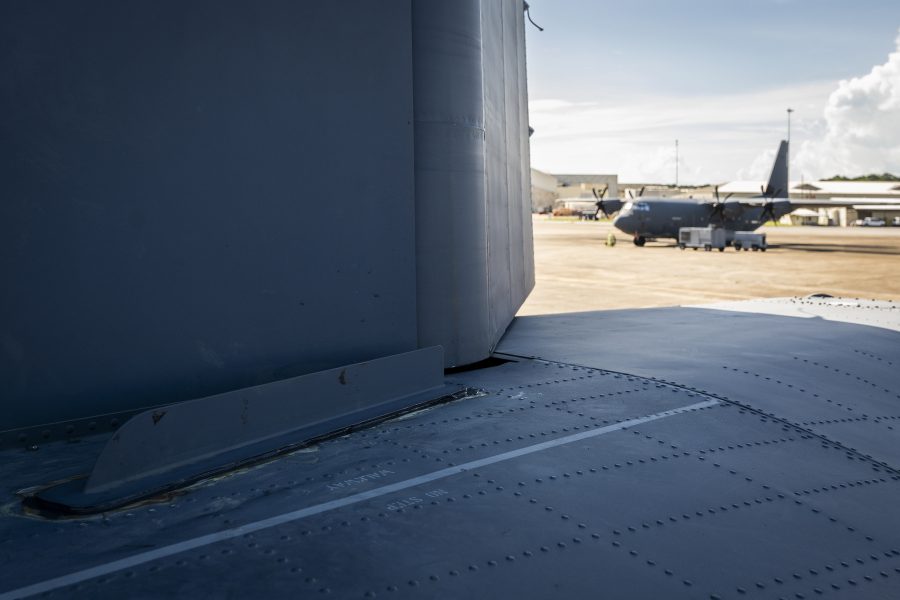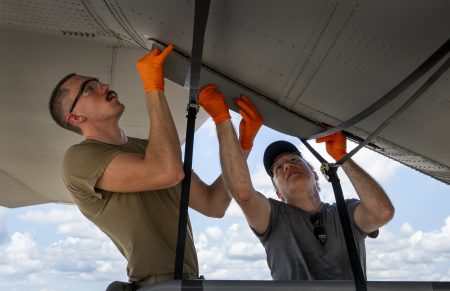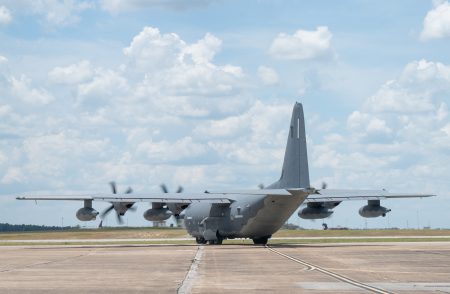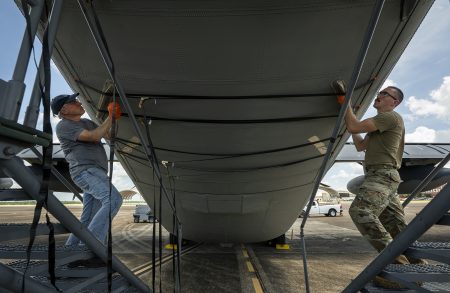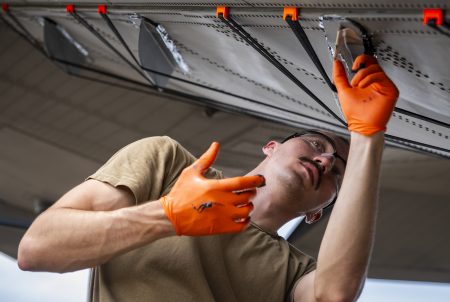An MC-130J special operations aircraft took off from Eglin Air Force Base, Fla., earlier this month with tiny aluminum fins mounted to its rear door and on either side of its tail fin—the latest step by the Air Force to squeeze fuel efficiency out of its mobility fleet.
While small, the aerodynamic “finlets” could reduce drag on the Air Force’s C-130 aircraft by 6 to 8 percent, according to a July 24 release from the 96th Test Wing. That, in turn, could give the C-130 greater range and more fuel efficiency.
The idea to add small aerodynamic elements to aircraft dates back decades, as the Air Force has experimented with winglets on KC-135s, microvanes on C-17s, and now finlets on C-130s.
In each case, the amount of drag reduced—and therefore, fuel saved—is small. But with hundreds of planes making thousands of flights each year, the savings theoretically add up to millions of dollars.
Transport and tanker aircraft are particularly well suited for such improvements because their cargo doors and refueling booms can create extra drag.
It has taken years for the 96th Test Wing to add finlets to C-130s, supported by the Air Force Operational Energy Office, Air Force Special Operations Command, the Special Operations Forces/Personnel Recovery Program Office, the Air Force Research Laboratory, and the Defense Innovation Unit. Contractor Vortex Control Technologies built the finlets and helped install them.
The flight testing that began July 16 aims to ensure the finlets are airworthy. After that, the MC-130J will go to Edwards Air Force Base, Calif., for more testing that includes airdrops.
The MC-130J is used by special operators for infiltration, exfiltration, and resupply, as well as for refueling rotary-wing and tiltrotor aircraft.
The plan is to eventually install finlets on the entire C-130J fleet, which includes Super Hercules cargo aircraft, AC-130J gunships, HC-130J helicopter refuelers, and WC-130J “weatherbirds.”
“It is an exciting day for the Department of the Air Force for finlets to reach this milestone in research, testing, and development as we seek to rapidly deploy innovative technology,” Roberto Guerrero, deputy assistant secretary of the Air Force for operational energy, safety, and occupational health, said in a statement. “Drag reduction initiatives like finlets are a tangible way we can modernize our fleet, reduce costs, and increase combat capability for the warfighter. Every gallon of fuel saved extends our operational reach and enhances readiness in contested logistics environments, directly supporting the Department’s mission to deliver airpower anytime, anywhere.”
The milestone comes on the heels of the Air Force’s January announcement that it was “entering the final phase” of evaluating microvanes on the C-17, inching closer to deploying them fleetwide after more than two years of testing.
On the other hand, the Air Force eliminated planned funding for KC-135 winglets in its 2026 budget request, a year after outlining plans to spend $104 million on them between fiscal 2026 and 2028.
“Program was terminated to support Administration priorities during Fiscal Year 2026 President’s Budget Request,” budget documents state.
